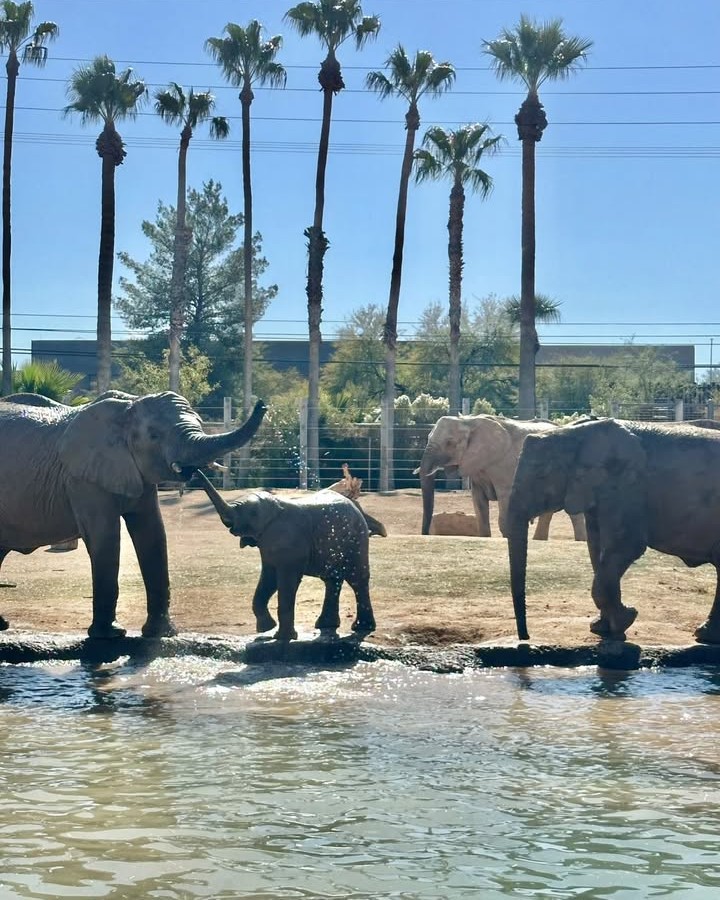- Understanding the significance of aquatic activities for elephants in zoo settings and their natural habitats.
- Exploring the roles of zoos in wildlife education, conservation, and showcasing natural behaviors through animal interactions.
- Analyzing the impact of social media on public engagement with zoos and wildlife conservation efforts.
- Strategies employed by zoos to improve animal welfare and promote biodiversity.
- The importance of community involvement and visitor contributions to conservation awareness.
Elephants, majestic and social creatures, thrive in both natural and zoo environments, particularly when provided access to activities that mimic their natural behaviors. Among these activities, bathing and swimming hold a special significance. In the wild, elephants are often seen wallowing in mud or playing in water bodies. This behavior is not merely recreational; it plays a crucial role in their physical and psychological well-being. Bathing helps elephants regulate their body temperature and prevents skin parasites. It is a time for social interaction, a core component of their complex social structure.
In zoo environments, replicating these natural behaviors is of utmost importance. Zoos strive to create habitats that cater to both the physical and mental health of elephants. Incorporating elements such as pools in elephant enclosures provides them with the opportunity to bathe, simulating their natural habitats. This initiative is vital for their overall welfare, as it supports their instinctual need to stay cool and engage socially. The sight of elephants splishing and splashing in water is not only a spectacle for visitors but a testament to the efforts made by institutions in advocating animal wellness.
Zoos play a pivotal role in wildlife education and conservation. They act as living classrooms, where visitors can witness firsthand the behaviors and characteristics of diverse species. This educational aspect is heavily underscored by activities such as elephants playing in water. By observing such behaviors, guests gain insight into the life of elephants, fostering a deeper appreciation for their conservation. These interactions are designed to bridge the gap between humans and wildlife, creating an emotional connection that is crucial for conservation advocacy.
Through direct experiences, zoos provide a platform to highlight the challenges wildlife faces, particularly those perpetuated by human activity. Elephants, often targeted for ivory and habitat encroachment, serve as powerful ambassadors for the conversation on biodiversity protection. Zoos emphasize the importance of sustainable practices that can mitigate threats to wildlife, thereby contributing to global conservation goals. Visitors leave with not only memories but a broader understanding of the role they play in preserving these magnificent creatures.
The power of social media has transformed the way zoos engage with the public and advocate for wildlife conservation. Platforms like Instagram offer a unique window into the daily lives of animals at the zoo. When users like @chloirene capture moments, such as elephants playing in a pool, they indirectly contribute to a wider narrative of conservation awareness. Social media posts showcasing joyful and healthy animals generate interest and empathy, encouraging broader discourse on environmental stewardship.
Zoos leverage these platforms to extend their reach and amplify their messages about animal welfare and conservation. Direct engagement with visitors through comments and sharing photos fosters a sense of community. It allows the public to feel part of a greater cause, motivating them to participate in conservation efforts actively. As digital influencers, zoo guests help promote initiatives, raising funds and support for programs focused on endangered species and habitat preservation.
Animal welfare remains a top priority for reputable zoos around the globe. Institutions employ a multifaceted approach to enhance the quality of life for their residents. Strategies include environmental enrichment, which is pivotal for stimulating animals both mentally and physically. For elephants, this can mean varied terrains, interactive toys, and communal spaces to encourage a range of natural behaviors. By mimicking the intricacies of their natural habitats, zoos contribute to the animals’ adaptability and resilience.
Furthermore, breeding programs in zoos are critical to maintaining genetic diversity among species at risk. These programs are carefully managed to optimize genetic variation, which is vital for the health of populations both in captivity and potentially in wild reintroduction efforts. The collaboration among zoos ensures a global approach to preserving endangered species and preventing extinction.
Community involvement plays a significant role in the success of zoo and conservation efforts. By engaging with visitors and inviting them to contribute to the cause, zoos build a network of environmentally-conscious advocates. Educational workshops, outreach programs, and volunteer opportunities enable the community to participate actively in wildlife preservation. These initiatives empower individuals with knowledge about ecological sustainability and how their actions impact the environment.
Moreover, programs encouraging photo submissions, like those highlighted on social media, are instrumental in inspiring public interest and action. By sharing special moments captured at zoo visits, guests contribute to a repository of visual stories that underscore the importance of conservation. This active participation fosters a collective responsibility toward wildlife, encouraging people to take informed actions in their everyday lives.
In conclusion, elephants playing in water at the zoo is more than just an entertaining scene. It embodies the intersection of animal welfare, public education, and conservation advocacy. Zoos serve as vital institutions in promoting biodiversity and safeguarding the future of species under threat. By leveraging the engagement power of social media and involving the community, they build a robust network of supporters who champion the cause of environmental stewardship.
*****
Source Description
Splish, splash, the elephants were playing in the pool when Zoo Guest @chloirene on Instagram visited the Zoo! It’s and we’re sharing your special moments from your most recent visit to the Zoo. Send us your photos by sending us a direct message on your favorite social platform.


